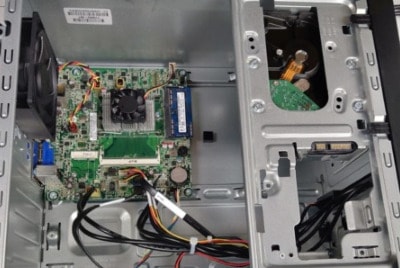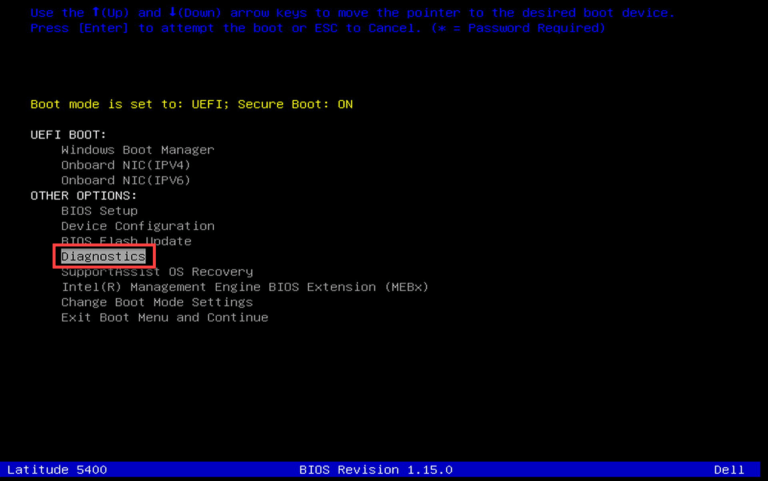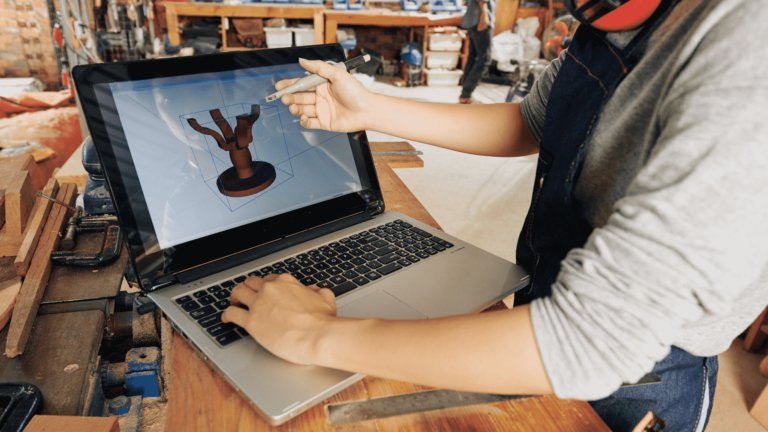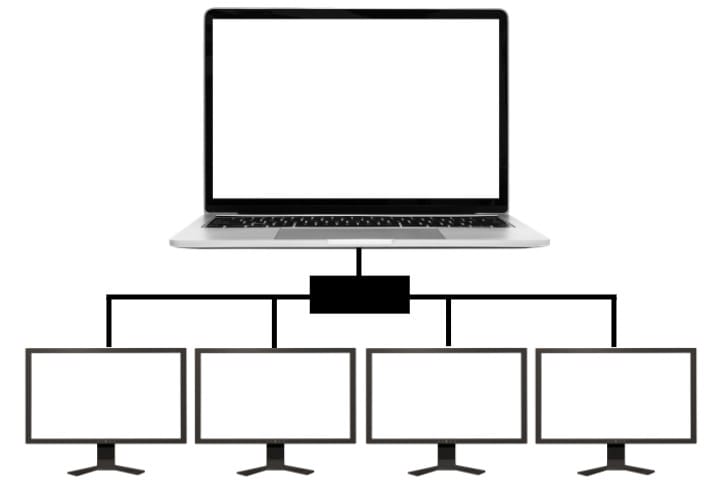
Have you ever wondered if you can use a laptop motherboard on a desktop? Well, you’re in for an exciting ride! Today, we’re diving into the fascinating world of computer hardware to explore this intriguing question. So, buckle up and get ready to unearth the secrets of laptop motherboards and their compatibility with desktops!
Now, before we delve into the nitty-gritty, let’s first understand what a motherboard is. Put simply, it’s like the brain of your computer, connecting all the essential components, such as the processor, memory, and storage.
But can a laptop motherboard, designed for a compact and portable device, be used in a larger desktop setup? That’s the million-dollar query we’re here to answer!
Join us as we embark on a journey to unravel the mysteries of laptop motherboards and discover if they can be a suitable fit for a desktop environment. From compatibility concerns to potential limitations, we’ll cover it all. So, grab a snack, get comfortable, and let’s dive right in!
Can You Use a Laptop Motherboard in a Desktop?
While it’s technically possible to use a laptop motherboard on a desktop, it’s not recommended. Laptop motherboards are designed to fit within the compact spaces of laptops, making them incompatible with standard desktop cases.
Additionally, laptop motherboards may have different power requirements and connectivity options. To ensure compatibility and optimal performance, it’s best to use a motherboard specifically designed for desktop use. Save yourself the hassle and invest in the right hardware for your desktop setup.
What are Laptop Motherboards and Desktop Motherboards
Before delving into whether a laptop motherboard can be used on a desktop, it is crucial to understand the fundamental differences between the two types of motherboards. Laptop motherboards, also known as system boards or main boards, are specifically designed to fit the compact form factor of laptops.
They are smaller in size, feature integrated components, and prioritize power efficiency. On the other hand, desktop motherboards are larger, offer more expansion slots, and accommodate various components that are not typically found on laptop motherboards.
Given the variations in size, form factor, and component integration, it is not as simple as plugging a laptop motherboard into a desktop computer and expecting it to work seamlessly. Let’s explore some of the limitations and considerations when attempting to use a laptop motherboard in a desktop setup.
Physical Compatibility Barrier
One of the main challenges in using a laptop motherboard in a desktop computer is the physical compatibility barrier. Laptop motherboards are designed to fit the specific dimensions and form factor of laptops, making them incompatible with the larger dimensions of desktop computer cases.
The mounting holes, connector placements, and even the shape of the motherboard may not align with the desktop chassis, preventing a proper fit.
Additionally, the input/output (I/O) ports on a laptop motherboard are often integrated into the laptop’s body itself, meaning they may not have the standard connectors seen on desktop motherboards.
Consequently, finding a suitable case that aligns with these unique dimensions and connection requirements can be an arduous task.
Beyond the physical differences, another challenge is the power supply. Laptop motherboards are designed to operate on lower voltages since they prioritize energy efficiency. Desktop power supplies, however, provide higher voltages to cater to the power demands of desktop components.
Without a proper adapter or converter, connecting a laptop motherboard to a regular desktop power supply will likely result in voltage mismatches, which can damage the motherboard.
Differences in Component Compatibility and Performance
While it may be hypothetically possible to overcome the physical compatibility barriers, there are further obstacles when considering the differences in component compatibility and performance between laptop and desktop motherboards.
Firstly, laptop motherboards are designed with integrated components, such as graphics cards, sound cards, and network adapters, to conserve space. These integrated components often have considerably lower performance capabilities compared to their desktop counterparts.
Attempting to use a laptop motherboard in a desktop setup may result in subpar performance due to the limited capabilities of these integrated components.
Moreover, laptop motherboards generally have fewer expansion slots or no expansion slots at all. Desktop computers, on the other hand, have multiple expansion slots for installing additional components, such as dedicated graphics cards, sound cards, and network cards.
Trying to use a laptop motherboard in a desktop computer may limit the ability to upgrade or customize the system to meet specific needs.
BIOS and Compatibility Issues
Another critical aspect to consider when using a laptop motherboard in a desktop is the compatibility of the BIOS (Basic Input/Output System). The BIOS serves as the interface between the hardware and the operating system, facilitating communication and initialization of hardware components during the system boot process.
Laptop motherboards often have custom BIOS versions that are optimized for the specific laptop model and its associated hardware. If a laptop motherboard is transplanted into a desktop, there may be compatibility issues with the BIOS, resulting in improper hardware recognition, driver conflicts, or even system instability.
Ensuring that the laptop motherboard’s BIOS is compatible with the desktop system is crucial for a successful migration.
In conclusion, while it may be technically possible to use a laptop motherboard on a desktop, it is not a straightforward process.
The physical compatibility barriers, differences in component compatibility and performance, and potential BIOS compatibility issues make this endeavor challenging and potentially limiting.
It is often more practical and efficient to use a dedicated desktop motherboard designed for desktop computer systems to ensure optimal performance and compatibility.
Factors to Consider Before Repurposing a Laptop Motherboard
Repurposing a laptop motherboard for use in a desktop computer requires careful consideration of numerous factors. In this section, we will explore the key points to ponder before embarking on such a project.
Overall Compatibility
Before attempting to use a laptop motherboard on a desktop, it is crucial to assess the overall compatibility between the laptop motherboard and the desktop components. Consider factors such as the socket type, RAM compatibility, expansion slot requirements, and power supply compatibility.
Without ensuring compatibility, the laptop motherboard may not function optimally or may not work at all in the desktop setup.
Required Modifications
Using a laptop motherboard in a desktop computer may require modifications to both the motherboard and the desktop case. The physical dimensions of the laptop motherboard may not match those of the desktop case, necessitating custom mounting solutions or even modifications to the case itself.
Additionally, the laptop motherboard’s I/O ports may not align with the standard connectors found in desktop motherboards, requiring specific adapters or custom solutions.
Power Supply Considerations
Laptop motherboards are designed to operate on lower voltages, typically provided by laptop power supplies.
Before attempting to use a laptop motherboard in a desktop, it is crucial to ensure that the desktop power supply can provide the appropriate voltage levels without damaging the motherboard. In some cases, an adapter or voltage regulator may be necessary to achieve the required voltage levels.
Component Limitations
It is essential to consider the limitations of the integrated components on a laptop motherboard compared to their desktop counterparts.
Integrated graphics cards, for example, may not offer the same performance capabilities as dedicated desktop graphics cards. If high-performance gaming or demanding applications are a priority, using a laptop motherboard may not be the ideal choice.
Potential Compatibility Issues
Compatibility issues may arise when using a laptop motherboard in a desktop computer, particularly with the BIOS.
Laptop motherboards often have custom BIOS versions tailored to the specific laptop model. Compatibility issues between the laptop motherboard’s BIOS and the desktop system may lead to improper hardware recognition, driver conflicts, or instability.
Upgradability and Customization
Consider the ability to upgrade and customize the system when using a laptop motherboard in a desktop setup. Laptop motherboards often have limited expansion slots, which may hinder the ability to add dedicated graphics cards, sound cards, or network cards.
If future upgrades or customization options are important, it is advisable to opt for a dedicated desktop motherboard.
Cost vs. Benefit Analysis
Lastly, conduct a cost vs. benefit analysis to determine whether repurposing a laptop motherboard is the most cost-effective and efficient solution for your needs.
Consider factors such as the cost of any necessary modifications, adapters, or voltage regulators, as well as the potential limitations and compromises that may come with using a laptop motherboard.
Benefits of Using a Laptop Motherboard in a Desktop
While the challenges and limitations of using a laptop motherboard in a desktop are significant, there may be certain benefits or advantages that make it a viable option in specific scenarios. Let’s explore some potential benefits of repurposing a laptop motherboard for use in a desktop computer.
Cost Savings
One of the primary reasons individuals consider using a laptop motherboard in a desktop is cost savings. Repurposing existing hardware, such as a laptop motherboard, eliminates the need to invest in a dedicated desktop motherboard.
This can be particularly useful for those on a tight budget or for projects where budget constraints are a significant consideration.
Space Efficiency
Laptop motherboards are significantly smaller than their desktop counterparts, allowing for more compact desktop computer setups. If space constraints are a concern, using a laptop motherboard can help create a smaller, more space-efficient desktop system.
Energy Efficiency
Laptop motherboards are inherently designed for energy efficiency, as laptops must prioritize battery life and overall power consumption. By using a laptop motherboard in a desktop, you can benefit from the energy-saving features and power efficiency optimizations already built into the motherboard.
Portability
Using a laptop motherboard in a desktop setup allows for increased portability compared to traditional desktop motherboards. The compact nature of the laptop motherboard allows for easier transportation and relocation of the desktop system.
It is important to note that while these benefits may be compelling, they must be weighed against the potential challenges, limitations, and compromises mentioned earlier. Each individual’s requirements, priorities, and objectives will vary, so thoroughly considering all factors is essential before deciding to use a laptop motherboard in a desktop setup.
Can you use a laptop motherboard on a desktop? The answer is technically yes, but there are significant challenges and limitations to consider.
The physical compatibility barrier, differences in component compatibility and performance, and potential BIOS compatibility issues make repurposing a laptop motherboard for a desktop setup challenging and potentially limiting.
While it may be possible to overcome these barriers with modifications, adapters, and careful consideration, it is generally more practical and efficient to opt for a dedicated desktop motherboard designed for desktop computer systems.
Dedicated desktop motherboards offer optimal performance, compatibility, and upgradability for a seamless desktop computing experience.
Ultimately, the decision to repurpose a laptop motherboard for use in a desktop should be based on a thorough understanding of the challenges, benefits, and specific requirements.
Consider factors such as compatibility, modifications, power supply considerations, component limitations, potential compatibility issues, upgradability, customization options, and the cost vs. benefit analysis.
By carefully evaluating these factors, you can make an informed decision that aligns with your needs, priorities, and budget. Whether you choose to use a laptop motherboard or opt for a dedicated desktop motherboard, remember to prioritize compatibility, performance, and reliability for an optimal desktop computing experience.
Frequently Asked Questions
When it comes to computer hardware, there may be a lot of confusion surrounding the compatibility of different components. One common question that arises is whether it’s possible to use a laptop motherboard in a desktop computer. Let’s dive into some frequently asked questions to shed light on this topic.
1. Can a laptop motherboard be used in a desktop computer?
Unfortunately, a laptop motherboard cannot be directly used on a desktop computer. The form factors and sizes of laptop and desktop motherboards differ significantly, making them incompatible.
Laptop motherboards are designed to fit inside the compact chassis of laptops, while desktop motherboards are built to fit the larger cases of desktop computers. Moreover, the connections and mounting points on laptop and desktop motherboards are not interchangeable.
If you’re looking to build or upgrade a desktop computer, it’s important to choose a motherboard specifically designed for desktop use. However, you can salvage certain components from a laptop, such as the hard drive, memory, or even the CPU, and use them in a desktop setup if they are compatible.
2. Why are laptop and desktop motherboards different?
Laptop and desktop motherboards differ due to several reasons. First, laptops are designed for portability, so their components need to be smaller and more compact. This includes the motherboard, which needs to fit within the limited space available inside a laptop chassis.
On the other hand, desktop motherboards have more room to accommodate larger components, additional expansion slots, and cooling systems.
Second, laptops utilize different power management systems compared to desktops. Laptop motherboards are designed to be more energy-efficient to prolong battery life, whereas desktop motherboards are optimized for higher performance and power delivery.
These design differences result in variations in the layout, connections, and power requirements between the two types of motherboards.
3. Can a laptop CPU be used on a desktop motherboard?
Generally, laptop CPUs are not compatible with desktop motherboards. Laptop CPUs use different sockets and have different pin configurations compared to their desktop counterparts. This means that physically fitting a laptop CPU into a desktop motherboard is not possible.
However, there is a small subset of laptop CPUs, usually from high-end gaming laptops, that use the same socket as desktop CPUs. In these rare cases, it may be possible to use a laptop CPU on a desktop motherboard, provided they have the same socket type and are supported by the motherboard’s BIOS. It’s important to research and ensure compatibility before attempting to use a laptop CPU in a desktop setup.
4. Are laptop RAM modules compatible with desktop motherboards?
No, laptop RAM modules are not compatible with desktop motherboards. Laptop and desktop RAM modules have different form factors and pin configurations. Laptop RAM modules are smaller in size and use a different type of connector called SO-DIMM (Small Outline Dual Inline Memory Module), while desktop RAM modules use DIMM (Dual Inline Memory Module).
These physical differences make laptop RAM incompatible with desktop motherboards.
If you have spare laptop RAM modules, unfortunately, you won’t be able to use them in a desktop computer. However, you can purchase compatible desktop RAM modules that suit your motherboard’s specifications.
5. Can a laptop power supply unit (PSU) be used in a desktop computer?
No, it’s not possible to use a laptop power supply unit (PSU) directly in a desktop computer. Laptop PSUs are designed to provide power to laptops, which have lower power requirements compared to desktop computers. Laptop PSUs have lower wattage outputs and different power connectors than desktop PSUs.
Attempting to use a laptop PSU in a desktop computer can cause compatibility issues, inadequate power delivery, and potentially damage the components. It’s crucial to use a PSU specifically designed for desktop computers to ensure an efficient and safe power supply.
So, can you use a laptop motherboard on a desktop? The answer is no. Laptop and desktop motherboards have different sizes, shapes, and features, making them incompatible with each other. Plus, the components and connectors on laptop motherboards are designed specifically for laptops, not desktops.
However, if you’re looking to upgrade your desktop, you can purchase a compatible desktop motherboard that suits your needs. Remember to always check the specifications and compatibility before making any changes to your computer.






